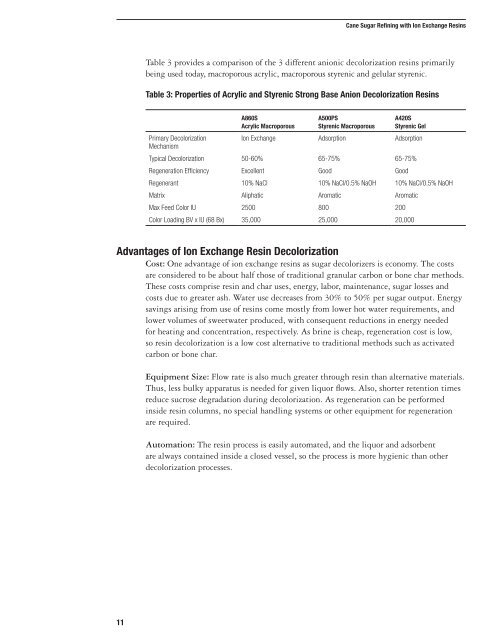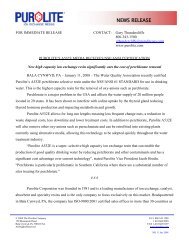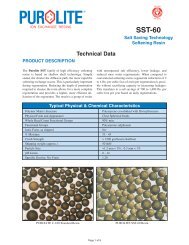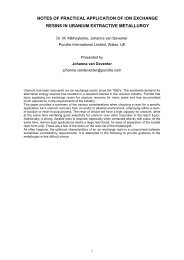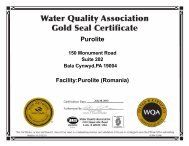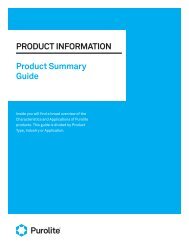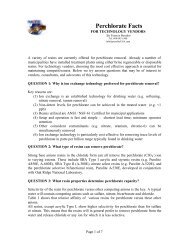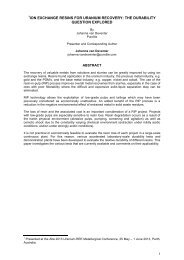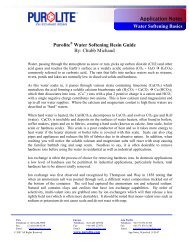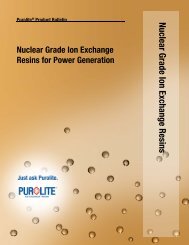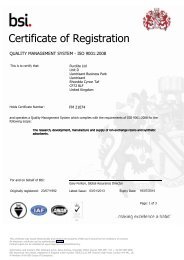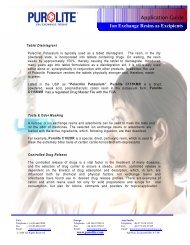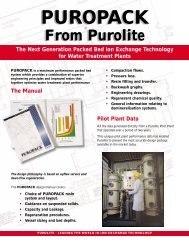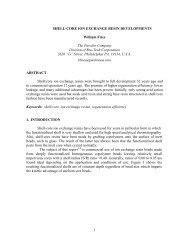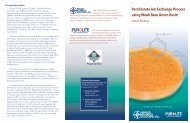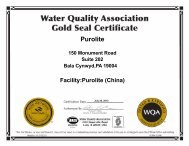Cane Sugar Refining - Purolite
Cane Sugar Refining - Purolite
Cane Sugar Refining - Purolite
Create successful ePaper yourself
Turn your PDF publications into a flip-book with our unique Google optimized e-Paper software.
<strong>Cane</strong> <strong>Sugar</strong> <strong>Refining</strong> with Ion Exchange Resins<br />
Table 3 provides a comparison of the 3 different anionic decolorization resins primarily<br />
being used today, macroporous acrylic, macroporous styrenic and gelular styrenic.<br />
Table 3: Properties of Acrylic and Styrenic Strong Base Anion Decolorization Resins<br />
A860S<br />
Acrylic Macroporous<br />
A500PS<br />
Styrenic Macroporous<br />
A420S<br />
Styrenic Gel<br />
Primary Decolorization<br />
Mechanism<br />
Ion Exchange Adsorption Adsorption<br />
Typical Decolorization 50-60% 65-75% 65-75%<br />
Regeneration Efficiency Excellent Good Good<br />
Regenerant 10% NaCl 10% NaCl/0.5% NaOH 10% NaCl/0.5% NaOH<br />
Matrix Aliphatic Aromatic Aromatic<br />
Max Feed Color IU 2500 800 200<br />
Color Loading BV x IU (68 Bx) 35,000 25,000 20,000<br />
Advantages of Ion Exchange Resin Decolorization<br />
Cost: One advantage of ion exchange resins as sugar decolorizers is economy. The costs<br />
are considered to be about half those of traditional granular carbon or bone char methods.<br />
These costs comprise resin and char uses, energy, labor, maintenance, sugar losses and<br />
costs due to greater ash. Water use decreases from 30% to 50% per sugar output. Energy<br />
savings arising from use of resins come mostly from lower hot water requirements, and<br />
lower volumes of sweetwater produced, with consequent reductions in energy needed<br />
for heating and concentration, respectively. As brine is cheap, regeneration cost is low,<br />
so resin decolorization is a low cost alternative to traditional methods such as activated<br />
carbon or bone char.<br />
11<br />
Equipment Size: Flow rate is also much greater through resin than alternative materials.<br />
Thus, less bulky apparatus is needed for given liquor flows. Also, shorter retention times<br />
reduce sucrose degradation during decolorization. As regeneration can be performed<br />
inside resin columns, no special handling systems or other equipment for regeneration<br />
are required.<br />
Automation: The resin process is easily automated, and the liquor and adsorbent<br />
are always contained inside a closed vessel, so the process is more hygienic than other<br />
decolorization processes.


